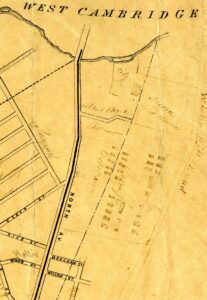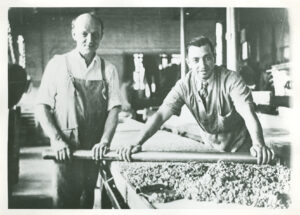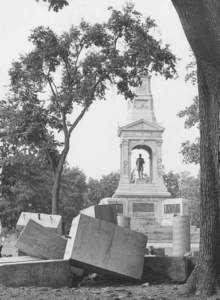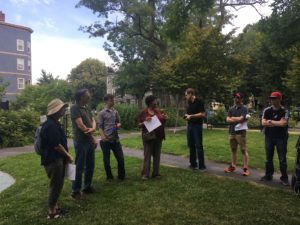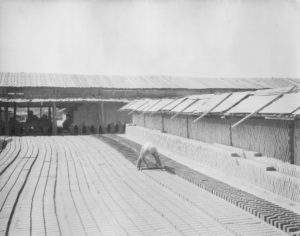The Remarkable John “Jack” Emerson: Founder of the J. H. Emerson Company
By Daphne Abeel, 2005
When Will and George Emerson begin to talk about their family background and their father, who founded the J. H. Emerson Company, they mention somewhat offhandedly that they are descended from a brother of Ralph Waldo Emerson and that their paternal grandfather was related to the artist Maxfield Parrish. But it is only when they begin to describe their father, John “Jack” Emerson, that their interesting and remarkable family legacy becomes clear.
Today, the J. H. Emerson Company, now run by Will and George, is tucked away in a beautiful, well-lit, old brick warehouse on a dead-end street in North Cambridge. When Jack Emerson started the company, in 1928, it was located at 15 Brattle Street, above what was once Woolworth’s. While two of his brothers had graduated from Harvard in the field of medicine, Jack was a high school dropout. At loose ends, the native New Yorker moved to Cambridge. He was inventive and mechanically oriented, and through his brothers’ connections at Harvard, he began to design and manufacture mechanical devices for the medical profession.
One of his first designs was the BarcroftWarburg apparatus for the Harvard Botany Department. It held vials of liquids and shook them to keep them in motion. Later, he designed the micromanipulator, which made it possible to move a slide under a microscope. Then came the galvanometer, which measured voltages using quartz fibers.
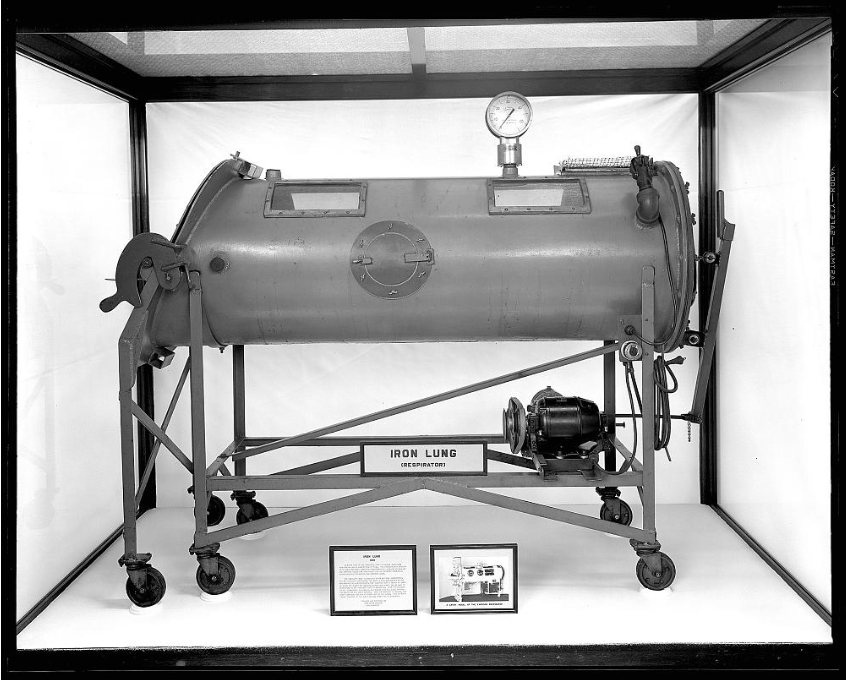
Said Will Emerson, “He was always talking to people at Harvard about what they needed, and that’s how he heard about the iron lung. He had always been interested in the mechanics of breathing.
“My father did not invent the iron lung, and he was very clear about that. What he did was to improve on Harvard’s design and make it better.” In the 1930s, there was a major polio epidemic. “Dad had made a number of improvements to the iron lung design, and he took his idea to Harvard. They ignored him, so he just went ahead and showed his model at a trade show.”
By the early 1930s, Emerson decided that the Brattle Street space was too small and moved to the current location. In the 1950s, he devised an underwater breathing device that was used by the navy. In the 1960s, he designed a simple and reliable ventilator that could inflate the lungs. It was used by many hospitals, including Massachusetts General. It was also used in Vietnam during the war.
Both Will and George Emerson remember working for their father throughout their high school years. George graduated in 1975 from M.I.T. with a degree in engineering and worked briefly for Digital Equipment Corporation. He joined his father’s company in 1980. Will attended Boston University in the late 1960s. The brothers grew up in a house on Spy Pond in Arlington. George, who manages research and development, still lives in Arlington. Will, the company’s administrator, lives in Framingham.
Today, the company’s most successful product is called a CoughAssist. Literally, it helps people to cough and was used in the treatment of the actor Christopher Reeve after his devastating horseback riding accident. Said George, “The CoughAssist machine has allowed the company to grow over the last 10 years. This apparatus is used all over the world.”
When Jack Emerson died, he held 20 patents. Said Will, “He had pancreatic cancer and died in February 1997, but he literally worked until the end. He attended two trade shows, in San Diego and San Francisco, in the fall of 1996.”
Will and George, now in their 50s, say they plan to keep the company going as long as they can. “We’re not thinking about retirement or anything like that yet,” said George. “We’ll just see how things go.”
“Our father could have been a multimillionaire, but that wasn’t what he was interested in,” said Will. “He just wanted to help people.”

